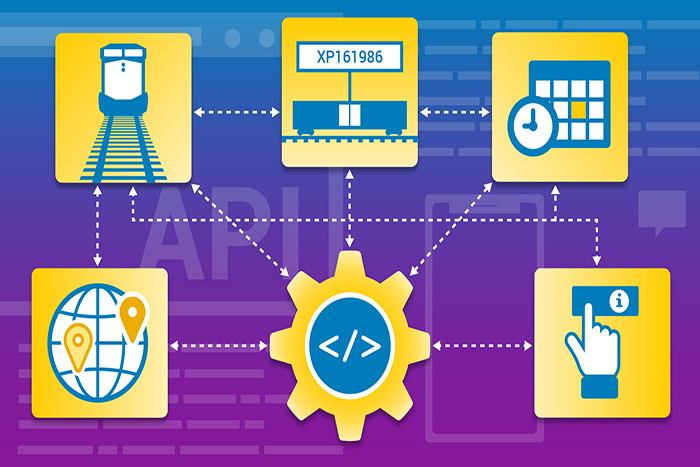This is a guest post by Union Pacific Railroad.
Union Pacific’s programmers are gearing up to launch a new developer portal that will significantly enhance customer experience and be the first of its kind in the railroad industry.
Currently in pilot mode, the technology will allow customers to access and interact with relevant railroad data within their own business platforms.
Driving this innovation are Application Program Interfaces (APIs), which allow computer applications to interact with each other to pass data or perform actions. Technology companies and Union Pacific have been using APIs for years.
Union Pacific’s industry-leading microservices implementation uses thousands of APIs internally. The company’s highly scalable microservices platform has an API registry—an Enterprise Service & Event Bus (ESB & EEB)—that serves as middleware to enable the company’s systems to talk to each other. This effort extends the APIs outside the company’s boundaries to customers.
Behind the scenes are more than 800 Union Pacific Information Technologies employees ranging from newly graduated developers to seasoned engineers building the technology and using industry insight to lead the market.
“APIs are going to be the preferred communication channel that’s used going forward for system integration because they lay the foundation for systems to more freely and quickly transfer data in real time,” said Union Pacific’s Lee Sorrick, director of Information Technologies.
For instance, customers will be able to integrate an API directly into their systems that allows them to release rail equipment without having to log in to the Union Pacific website.
“We’re putting flexibility into the customers’ hands,” said Union Pacific’s Kiley Freeman, director of commercial strategy and customer experience. “Customers are excited to optimize their supply chain, reduce the manual work and automate processes all the way through.”
As external APIs develop, other actions customers may take include performing diversions, creating customer support requests and using shipment information to update their planning processes.
“The goal is to make information access as self-service as possible,” said Union Pacific’s Kyle Dyer, principal engineer of Information Technologies.
The railroad’s API development workflow allows innovation to come from many channels, as stakeholders submit service ideas, design specifications based on customer needs and connect with an architect who validates the request and works with the internal API review team to prevent duplication and ensure consistent terminology.
“Whether customers are interacting with us on our website, through our APIs or through intelligent personal assistants like Alexa, they will receive the same answers,” Sorrick said. “It’s critical the information coming from every system is easily digestible, regardless of how the customer receives it.”
The way customers will be able to receive information is more focused as well. Union Pacific employees are encouraged to take what they learn about the API-first architecture and apply it to all facets of the business, both internally and externally.
“Each API is a building block, and it will be interesting to see what our employees and customers create,” Sorrick said. “This launch is only the beginning.”




